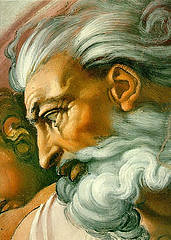
*** Disclaimer: This entry is an observation of different perceptions of "beauty" and is "tongue-in-cheek", designed to prove that Italy reigns supreme. It is not meant to demean anyone, but rather to showcase Italian beauty, inside and out, and how Italy views beauty, as opposed to how America views it. Obviously, there IS NO "most beautiful" person in the world. But since People magazine is obsessed with this topic, here at Blogiorno I don't want to fall behind, seeing as how my readership rates are about the same as theirs, give or take the population of a few continents. Anyway, there is no need to send me email about the sins of lust or idolatry; please, this blog entry is not about that at all. For you gals, you know how you have late-night slumber-party talk where you opine over Johnny Depp, Brad Pitt and Jack Black, often imbuing them with impossibly perfect character, demeanor and hygiene, without actually having any evidence? Okay then. I think I've covered everything. Now, onward with the beauty, cara amici. ***
Every now and then you see the headline on a magazine whilst waiting to purchase your groceries at the supermarket: "The Most Beautiful Woman In The World..." Typically, this headline is accompanied by a twenty-something-year-old girl of ridiculous proportions, computer-enhanced liquid-blue eyes and golden-highlighted hair. Such a headline is, of course, somewhat silly because a claim like that is completely subjective. Who makes these decisions about who THE most beautiful woman in the world is? Why do they feel so bold and free as to announce it to the world? I would really like to know. And why do various magazines differ on who THE most beautiful woman is? One would think if it were that certain, then all of these high-quality magazines (e.g., GQ, People, In Style, Truckin') would reach the same conclusion.
Alas, it is not that simple. In fact, for the magazine editors it surely must be an incredibly complicated selection process, accompanied by complex opinion polling (i.e., their teenaged sons and daughters) and perhaps even intense, personal wining and dining (i.e., courtesy of slippery L.A. and NYC agency execs). Ironically, however, it is the ever-changing, subjective nature of the bold periodical statements which allow me to contrast them with the following universally objective announcement:
The most beautiful woman in the world is from the great country of Italy, and that woman's name is Monica Bellucci.
Ms. Bellucci is an Italian model-turned-actress, who can actually act quite masterfully. She is perhaps most well known as Mary Magdelene from "The Passion of the Christ", and she has appeared in the two most recent "Matrix" films. Of course, she has also appeared in numerous Italian films. She is probably the most well-known Italian actress in Italy.
 If you look closely at the photograph of Monica Bellucci, you'll notice a few things:
If you look closely at the photograph of Monica Bellucci, you'll notice a few things:
1. She has no blonde highlights. 2. She is not 18-25 years old. 3. She weighs more than a cantaloupe. 4. She does not roast in the sun but has natural--and untattooed, thank God--fair skin. 5. She is the most beautiful woman in the world.
On that last point, note the use of the word "woman". Ms. Bellucci is a woman. "Of course she is," you may perturbedly say, perhaps as you embarrassingly recall the Maxim magazine your heathen roommate slid onto the counter whilst purchasing tough actin' Tinactin and the family-sized bottle of Albertson's rum in the plastic container. (Please recycle.) Ah, but let's juxtapose her with a few of the shamelessly self-promoting, headline-grabbing females of late: Paris Hilton, Lindsey Lohan, Britney Spears, to name a few. Does anyone really consider any of these to be actual "women" in the course of random conversation? Probably not. They are usually referred to as "babes", "hotties", or "girls". But make no mistake about it: they are merely pretenders. They are not women.
You may also notice that Ms. Bellucci breaks all of the traditionally held ideals of what makes one attractive in the American market: She is a dark, classic Italian beauty, she appears to eat food and, in fact, she is well over 40 years old.
On her age, a special note: In Italy, a woman is considered to be at the peak of her womanly powers no earlier than age 30. As she reaches her thirties, forties and fifties, she is considered to be at her most beautiful. I applaud that way of thinking, and this makes sense to any rational, thinking person.
So once again, the Italians have it right, and American "culture" has it wrong: a woman cannot be considered beautiful until she begins to mature, inside and out. If time is kind to her in that process of maturation, she becomes more and more beautiful. But it isn't about just physical beauty; Italians also know that as a woman matures physically, so she does emotionally, mentally and spiritually. Thus, "beauty" takes on a completely different meaning in Italy, and, in my humble opinion, a much deeper meaning.
Therefore ladies and gentlemen, God, Italy and Blogiorno give to you The Most Beautiful Woman In The World, Ms. Monica Bellucci.
Bravo! Buona fortuna Signora Bellucci!









